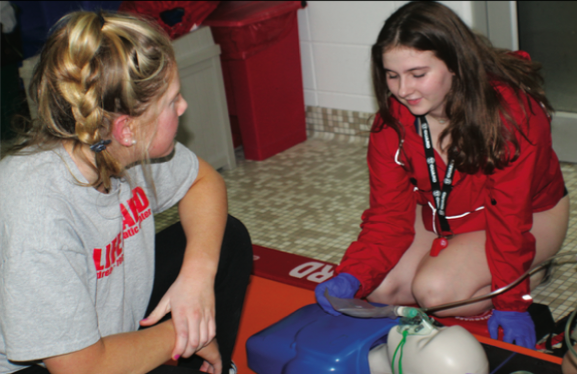
Voiced by Nicole Bergendahl, Staff Writer

Written by Nydia Ramos, Editor in Chief
 A growing number of states have been increasing their minimum wage requirements as the cost of living goes up across America. Large companies such as Amazon, Walmart, and Uline all offer starting pay several dollars more than the federal minimum wage.
A growing number of states have been increasing their minimum wage requirements as the cost of living goes up across America. Large companies such as Amazon, Walmart, and Uline all offer starting pay several dollars more than the federal minimum wage.
But still, a federal probationary pay rate, enacted 22 years ago, enables employers to pay young adults well below this national standard.
The Fair Labor Standards Act (FLSA), created by the United States Department of Labor, requires a minimum of $4.25 per hour for employees under 20 years of age during their first 90 days of employment. This allows for employers to pay their workers under the federal minimum wage ($7.25 per hour.)
Working teens are often affected not only by the FLSA, but the insufficient wages that are often distributed to young adults. Students at Indian Trail High School & Academy share their experiences and opinions on the topic of wages.
“I don’t think paying $4.25 per hour to someone for their first 90 days is fair. All jobs have their own dif cult tasks, and I wouldn’t want to be paid less just to get paid more later when I’m doing the same job,” said Brenda Lopez, a Communications Academy senior, who’s held her current job for nine months.
Other students agree, saying that be- ing paid $4.25 per hour is unjustified when doing the same amount of work as others, especially considering expenses related to starting a new job such as buying a uniform and using transportation. Several teens said their employers don’t pay enough for them to meet their basic needs, nor do they get the wages deserved according to the work they put in. Even when they are paid above minimum wage.
“I think that I should be making a good deal more money than I am. I started at $8.50 per hour almost a year and a half ago when I only knew one position,” says Karlee Schwandt, a General Studies senior. “I now know five positions and have worked an average of around 30 hours a week for 18 months, trained at least a dozen other employees.”
Some teens work physically and men- tally taxing jobs, handling many tasks at once and exerting their bodies to great lengths, yet they still are not paid the amount of money that reflects all of the work they put in, they said.
“We as utility clerks put so much physical work into this job. I literally get off work every day with back pain, arm pain, and leg pains. I’m always sore,” said Lopez.
Alexandra Ash, 18, is a Kenosha resident who de- scribed a former job as a server that she worked while attending high school.
“I was doing everything from easy jobs to the hard ones … I’d have to cook the pizzas, count money in the cash drawers, answer phones, clean, wash dishes, cut pizzas, serve guests… I definitely was getting underpaid for two years,” Ash said.
Working as a server, she was paid $2.33 per hour plus tips, though the amount of people that would come in each night were not enough to make the tips add up to the minimum $7.25 per hour. Some nights, no customers would dine in at all, leaving her severely underpaid.
Some employers exceed at being fair and meet- ing the needs of their teenage employees while others lack the skill. Though there are still some students who have jobs that cover most of their nancial needs, being paid $9 per hour and up, many businesses under pay and over work.
A staff writer of The Pulse, Nicole Bergendahl, has created an infographic with information on all of the jobs for teens in the Kenosha area. All of the jobs listed do not take advantage of the FLSA in underpaying, and for those who start at minimum wage, there are opportunities within the workplace to move up and get raises.
